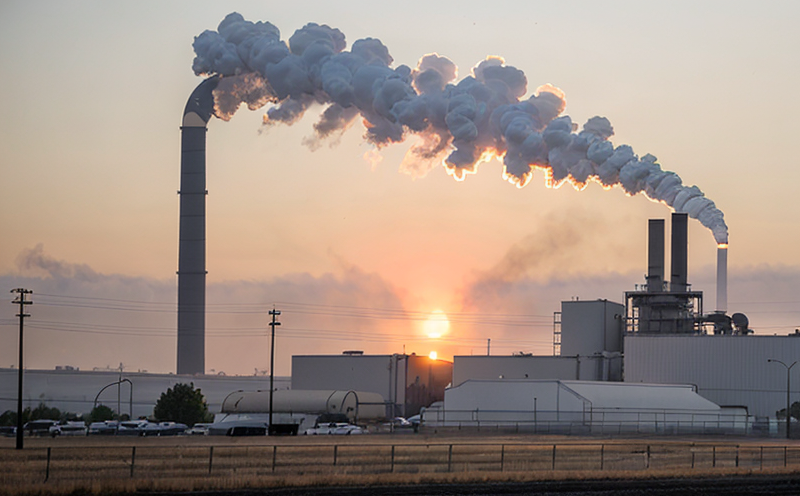ISO 10155 Stationary Source Emission Testing
The ISO 10155 standard provides a robust framework for the determination of emissions from stationary sources. This includes industrial facilities, vehicles, and other equipment that emit pollutants into the atmosphere during operation. The purpose of this testing is to ensure compliance with local, national, and international emission standards, which are crucial for environmental protection.
The testing methodology encompasses various stages including the identification of potential emission sources, installation of monitoring devices, continuous emission measurements, and finally, the evaluation of collected data against specified limits. This process ensures accurate quantification of emissions to prevent excessive pollution that can harm human health and ecosystems.
Compliance with ISO 10155 is essential for industries such as power generation, manufacturing, and transportation sectors where continuous monitoring and reporting are mandated by environmental regulations. The testing procedure involves the use of specialized equipment capable of capturing minute trace gases emitted from sources like smokestacks or vehicle exhaust systems.
The ISO 10155 standard emphasizes the importance of selecting appropriate sampling techniques based on the nature of the emissions being measured. This could range from direct sampling at the source to dilution methods aimed at reducing interference during measurement. Proper calibration and maintenance of analytical instruments are also critical aspects that contribute significantly to test reliability.
One key aspect of this testing is understanding how different variables influence emission levels, such as operational conditions (temperature, pressure), fuel composition, or catalyst activity in catalytic converters. By accounting for these factors, laboratories can provide more precise estimates of actual emissions under real-world scenarios rather than idealized laboratory settings.
Another important consideration is the role of statistical analysis in interpreting test results. Since environmental parameters vary over time and location, multiple samples may need to be collected at different intervals throughout a production cycle or operational period. Analyzing these data points helps identify trends or anomalies indicative of potential issues requiring corrective action by facility operators.
Furthermore, regular audits conducted according to ISO 10155 guidelines help maintain consistent performance over time and demonstrate commitment towards sustainability goals set forth by regulatory bodies worldwide.
Industry Applications
- Power Generation: Ensuring compliance with emission limits set by environmental agencies.
- Manufacturing: Continuous monitoring of production processes to minimize air pollution.
- Vehicles: Testing exhaust emissions from various types of vehicles including cars, trucks, and buses.
| Emission Source | Measurable Parameters | ISO 10155 Clause |
|---|---|---|
| Smokestacks | SOx, NOx, CO, THC, PM2.5 | Clauses 8 and 9 |
| Vehicular Exhaust Systems | CO, HC, NOx | Clause 10 |
| Fuel Oil Burners | Sulfur content, ash content, viscosity | Clause 11 |
Environmental and Sustainability Contributions
Emission testing according to ISO 10155 plays a vital role in reducing the environmental footprint of industrial operations. By accurately measuring and reporting emissions, companies can take proactive measures to reduce their impact on air quality.
The data obtained from these tests serve as valuable input for developing strategies aimed at improving efficiency within manufacturing plants or optimizing fuel consumption among fleets of vehicles. This not only aids in meeting regulatory requirements but also contributes positively towards corporate social responsibility initiatives focused on sustainability and green growth.
Additionally, compliance with ISO 10155 helps build trust between industries and communities by demonstrating a commitment to protecting public health and the environment. Regular assessments enable early detection of any deviations from expected emission levels which can then be addressed promptly before they lead to more serious consequences.
Use Cases and Application Examples
Case Study 1: A major coal-fired power plant conducted emissions testing using ISO 10155 procedures. The results revealed higher than expected SOx levels during peak hours, prompting the installation of additional scrubbers to reduce sulfur dioxide emissions.
Case Study 2: An automotive manufacturer implemented frequent checks on vehicle exhaust systems following ISO 10155 standards. This led them to identify issues with certain models’ catalytic converters, leading to recalls and improvements in product quality.





